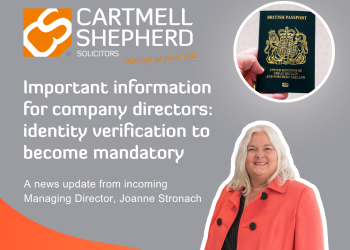Smart driving on the motorway
October 4th 2021As our roads get busier, solutions need to be found to cope with the inevitable delays caused by heavy traffic.
Thinking it over with Carol Fish Director & Head of Serious and Catastrophic Injury…
One of the initiatives introduced in a bid to increase capacity on our congested road network are smart motorways. Unlike conventional motorways, which have a fixed speed limit of 70mph (unless there are roadworks or an incident) and a permanent hard shoulder, a smart motorway uses different methods to manage the flow of traffic and responds in real time to congestion, roadworks and accidents to keep traffic moving. They do this through the use of technology including CCTV, radar and sensors to monitor traffic; speed restrictions and lane closures in the event of an incident or congestion; and overhead signs and large roadside information signs which warn about queues, speed limits, closed lanes and diversions.
One of the most controversial aspects about smart motorways is conversion of the hard shoulder into a running lane. Instead of a hard shoulder, smart motorways have Emergency Refuge Areas (ERAs) spaced at regular intervals. If a lane must be closed due to a collision or roadworks, an overhead sign displays a red ‘X’.
Road safety campaigners have raised concerns about All Lane Running (ALR) motorways due to several fatal accidents involving stationary vehicles being hit from behind.
Among them is Meera Naran, from Leicester, who was awarded an MBE for her road safety campaigning following the death of her eight-year-old son in a smart motorway collision.
She pushed for the development and adoption of the Government’s £500 million 18-point road safety plan for smart motorways, and the inclusion of vital updates to the Highway Code around motorway driving, as well as successfully campaigning for the Government’s £5 million road safety drive. The measures formed part of the Government’s action plan to address concerns about the safety of smart motorways, published in March 2020.
National Highways (formerly Highways England) has described smart motorways as ‘the safest roads in the country’, with a lower number of fatalities per distance than on conventional motorways.
But it seems the public has yet to be convinced.
In a recent RAC poll, 63 per cent of respondents did not believe measures such as variable speed limits in response to incidents or ERAs adequately compensate for the removal of the hard shoulder.
Some 62 per cent said ALR motorways should be scrapped, while the technology that manages traffic flows and detects breakdowns should be retained.
Fewer than one in four (24 per cent) of the 2,400 drivers surveyed support the continuation of Government policy, which is to continue using ALR motorways while increasing the number of ERAs and boost systems to spot stationary vehicles and catch motorists ignoring closed lane signs.
The key factors here are driver safety and confidence. In order to feel safe on our roads, drivers must have confidence in not only their own driving ability but also in the safety of their vehicle, and the systems in place to ensure they are safe on the road. They need to know that, if the worst happens and they have the misfortune to be involved in an accident, or experience a breakdown, that they can reach a place of safety and get the help they need.
While stopping on the hard shoulder should always be a last resort and only used in an emergency – one in 12 motorway fatalities happen there – it at least offers an alternative to being stranded on a busy four-lane motorway.
Smart motorways may be a cheaper and less disruptive option to dealing with congestion but they bring with them a whole new set of issues, which must be addressed through the implementation of the necessary safety measures and increased awareness.
You can contact Carol on 01228 516666 or the Cartmell Shepherd personal injury team.








